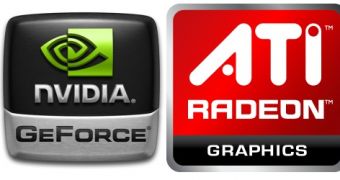Both NVIDIA and AMD are expected to be present at this year's Game Developers Conference, held in San Francisco between March 23 and March 27. As leaders in the industry for graphics solutions, both companies are expected to provide their view on the future of gaming graphics and discuss how their technologies can help developers improve the gaming experience for end-users. According to the latest details, ATI will focus on promoting DirectX 11, while NVIDIA will insist on its current technologies, including physics on GPU and stereoscopic 3D.
Sunnyvale, California-based AMD will be concentrating on DirectX 11 and its tessellation feature, which ATI has been trying to promote for a long time now. Microsoft's next-generation application programming interface, Direct3D 11, will introduce three new graphics pipeline stages designed for flexible tessellation. ATI is known for having been an early adopter of new technologies and provide support with their Radeon graphics cards. The company has been developing hardware tessellation for a while now, but with the release of DirectX 11, tessellation will become a more general concept.
While ATI will discuss the future with DirectX 11 and tessellation, NVIDIA will focus on promoting the efficient use of the technologies it currently supports, including the much publicized PhysX and its newly released product, Stereoscopic 3D. The Santa Clara, California-based graphics chip maker will try to demonstrate how GPUs can be used for game AI (artificial intelligence) and physics processing. Ever since NVIDIA acquired Ageia and gained access to their PhysX technology, the graphics chip maker has been promoting PhysX for a better gaming visual experience.
All of the aforementioned technologies are proof of the evolution of computer graphics and hardware technologies. Although each company is focusing on a different aspect of the current and future state of computer graphics, they are both trying to prove to developers and end-users that their method needs to be implemented in future releases.

 14 DAY TRIAL //
14 DAY TRIAL //